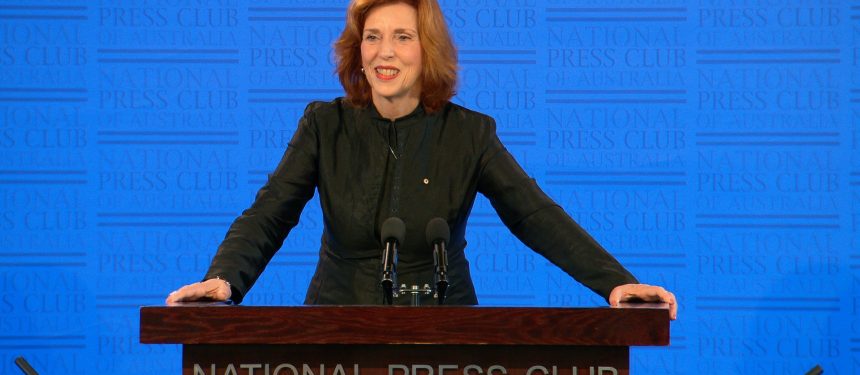A new campaign to entice businesses to link up with universities and increase the number of opportunities for international and domestic students to integrate work with learning has been launched by Universities Australia. Meanwhile, the body continues to fight the government on an imposed funding freeze.
News and business analysis for Professionals in International Education
Have some pie!
Universities Australia pitches to business, combats funding freeze
 Universities Australia has made an economic case for increasing business and higher ed collaborations, saying they have already accrued $10.6bn in revenue. Photo: Robb Shaw Velzen
Universities Australia has made an economic case for increasing business and higher ed collaborations, saying they have already accrued $10.6bn in revenue. Photo: Robb Shaw Velzen Clever Collaborations: The Strong Business Case for Partnering with Universities, launched last month during the Universities Australia Higher Education conference in Canberra, seeks to make “a business case to business” by outlining the economic returns of collaborating with universities to tackle complex problems.
“Australia’s universities are open for business and we’re here to help,” UA chair Margaret Gardner said.
“If you have a complex business challenge you haven’t been able to crack, come talk to an Australian university about how we can work together to solve it.”
The announcement coincided with new modelling released by Cadence Economics for UA, which found businesses who had already partnered with universities generated $10.6bn in revenue from their collaborations. For every dollar invested, they received $4.50 in returns.
During the launch, Gardner said increasing the number of collaborations from 16,000 to 24,000 could further raise Australia’s GDP by $10bn, and bring the country’s collaboration rate to the level of “innovation powerhouses such as Israel and the US”.
“Australia’s universities are open for business and we’re here to help”
“By tapping into university talent, business can source new ideas, get the jump on early stage research and cut the time it takes to bring new products to market,” she said.
While Gardner made an economic case for why businesses should partner with universities, UA chief executive Belinda Robinson told The PIE News building those collaborations would also have significant returns for students’ learning outcomes.
“By partnering with businesses, universities also increasingly provide international and domestic students with real-world learning,” she said, adding that there were several case studies from existing partnerships.
“It would be nice if money was limitless, but it is a sad fact of life that it is not”
“These “Clever Collaborations” include student placements and scholarships that allow students to get relevant work experience, while businesses get to identify the best skilled graduates.”
The announcement, which will also see Gardner writing to the heads of industry bodies, the AI Group, the Business Council of Australia, and the Australian Chamber of Commerce and Industry, comes during a period in which UA is petitioning the government to reconsider its December 2017 funding freeze.
Announced after most universities had completed their budgeting for 2018, the freeze on the Commonwealth Grant Scheme created a $2.2bn shortfall in expected funding across universities, and could lead to universities ramping up their competition for international students.
During the launch, Gardner again reiterated UA’s stance, saying keeping funding at 2017 levels was “a cap on opportunity for all Australians”.
“By partnering with businesses, universities provide students with real-world learning”
“[Since removing the cap on university places in 2009], our university system now educates tens of thousands more Australians who would not otherwise have had the chance of a university education,” she said.
“This is all the more reason why – having opened the doors of opportunity – our nation cannot afford, socially or economically, to slam them shut once more.”
She added that the freeze threatened to weaken one of Australia’s largest assets, education, which currently sits as the country’s third biggest export.
“It makes no sense to look at government expenditure on universities in isolation. Or to ignore the relationships between funding for domestic and international students, or between education and research.”
But education minister Simon Birmingham appears steadfast in his decision.
“It would be nice if money was limitless, but it is a sad fact of life that it is not,” he told delegates.
“Too many in the university sector seem to have underestimated the resolve of the government to live within our means, to live within our budget. That was a mistake.”
A report pitching further collaboration and highlighting some of the existing partnerships was also published.
Still looking? Find by category:


